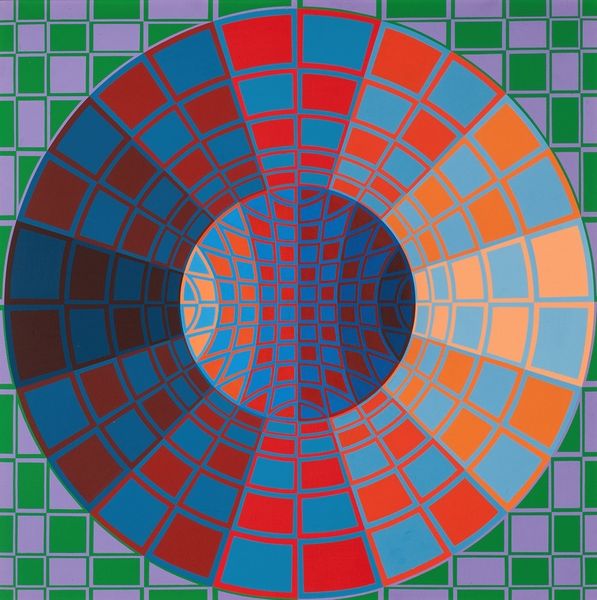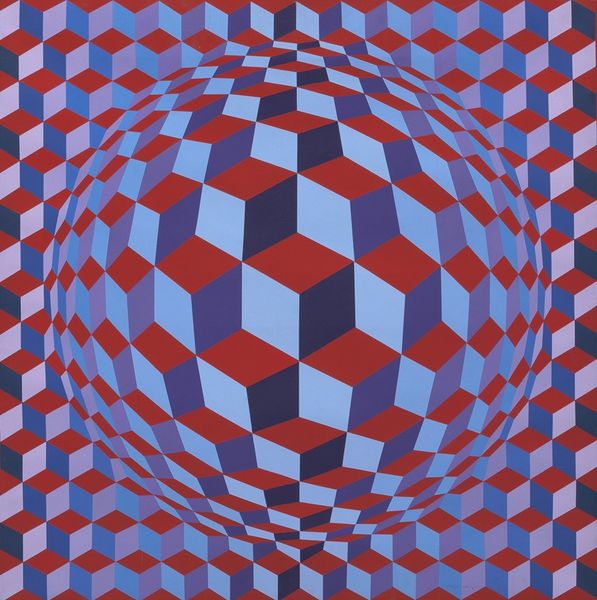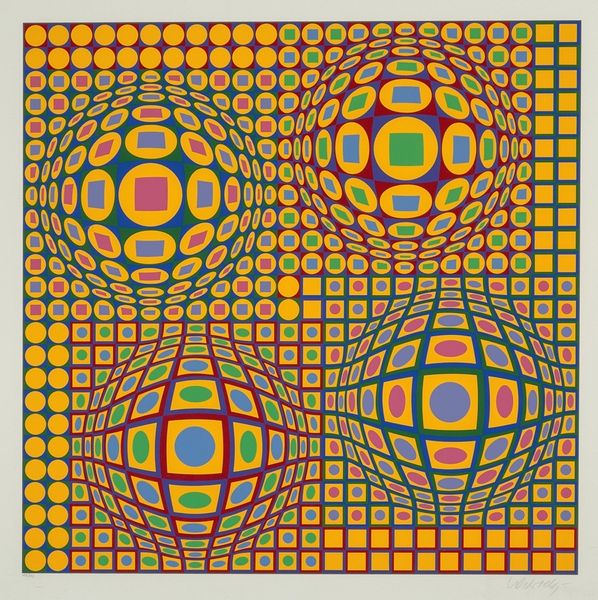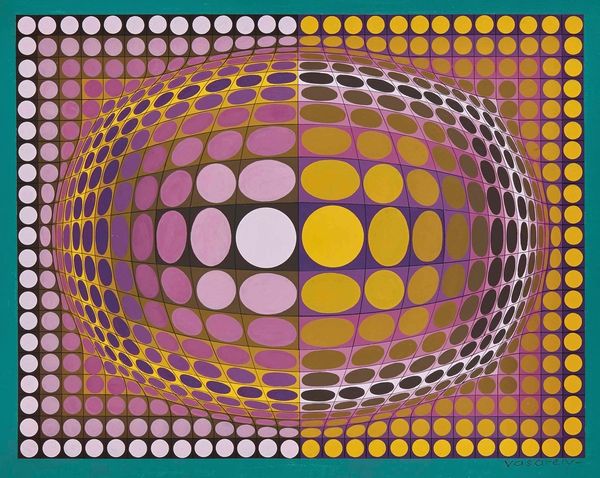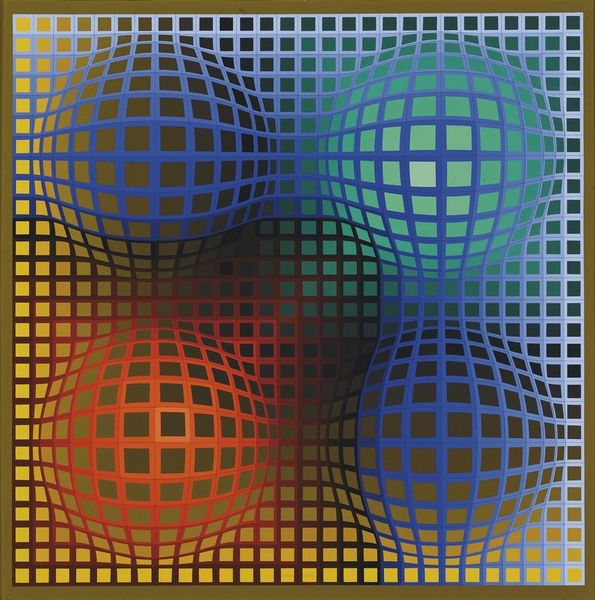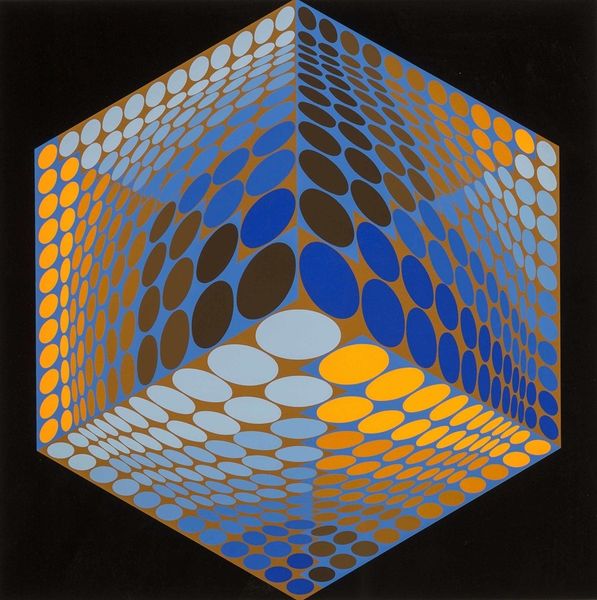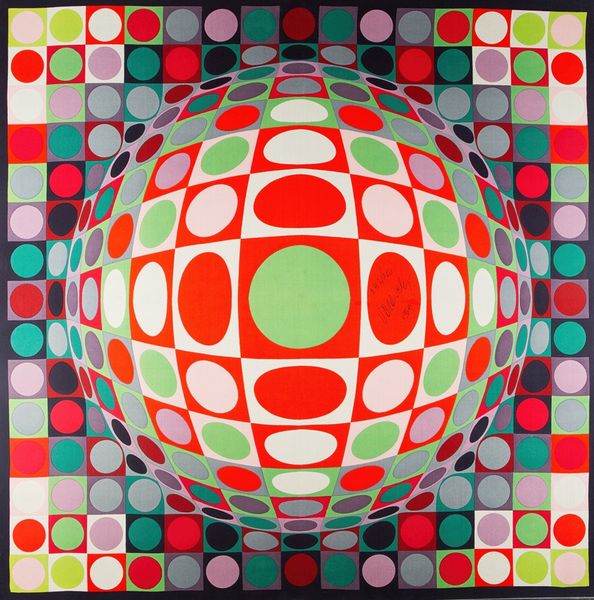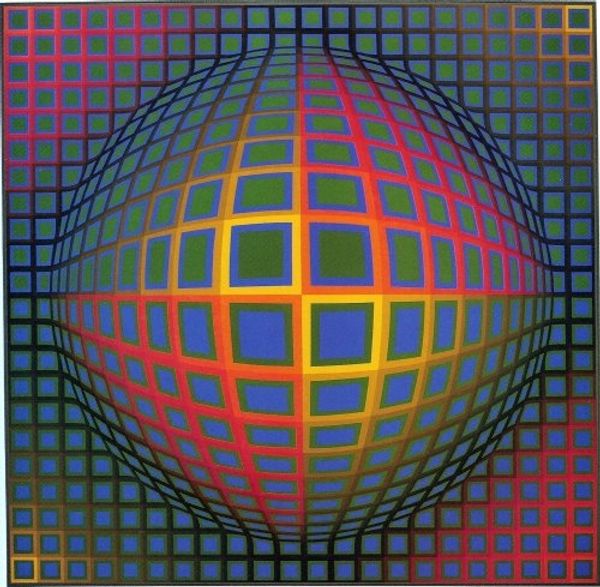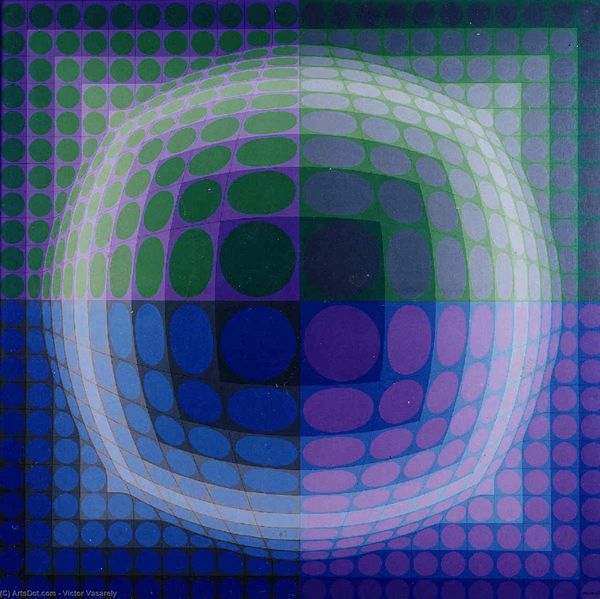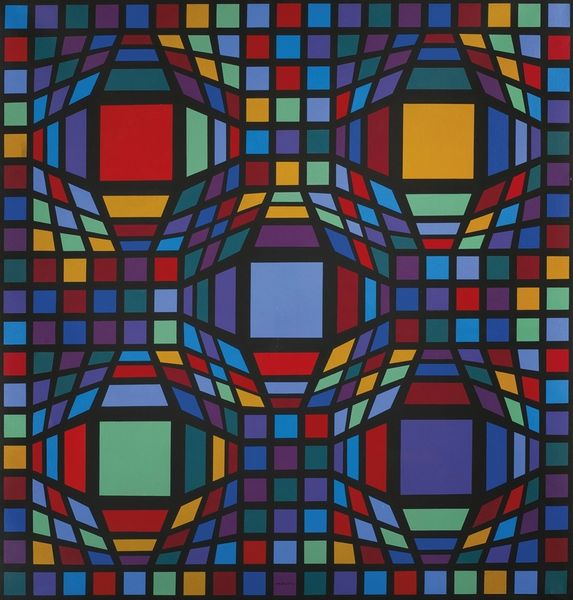
acrylic-paint
#
op-art
#
acrylic-paint
#
geometric
#
abstraction
#
modernism
#
hard-edge-painting
Copyright: Victor Vasarely,Fair Use
Curator: Stepping up to this striking canvas, we see Victor Vasarely’s "Cheyt Pyr," painted in 1971. Its optical illusion leaps off the surface! What’s your initial impression? Editor: Whoa! It feels like a portal is opening in front of me. The shifting blues and reds, forming a sort of warped grid… it’s intensely dynamic, almost unsettling. Curator: Absolutely. Vasarely, a key figure in Op Art, crafted this using acrylic paint on canvas, but it almost denies its material reality with the depth created. Consider the social climate of the ‘70s—a boom in technology, psychedelia—and how this fits in. Editor: That’s fascinating. The ‘70s embraced this sense of simulated space. Given Vasarely's commitment to making art accessible and even reproducible, how did his process contribute to this broader social and cultural dialogue? Did he embrace or critique the era’s growing commercialization? Curator: He actively pursued the idea of “art for all”, embracing industrial production techniques and questioning the exclusivity around fine art. There's a democratic element embedded within this work: it can be easily reproduced and distributed widely, moving away from the traditional elitist structures. Editor: Yet the paradox is that "Cheyt Pyr," despite its intended accessibility, still ends up within museum walls, perpetuating a certain hierarchy. It raises the question of how successfully Op Art bypassed institutional gatekeepers and democratized visual culture outside that context. Curator: A fair point. Museums provide a space for preservation and context, engaging with Vasarely's work as an art object even as he challenges what constitutes high art. Consider the legacy though; this aesthetic language heavily impacted graphic design and commercial applications. Editor: Precisely! And isn't it ironic that the aesthetics developed within fine art now profoundly shape the everyday environments we navigate, blurring those initial boundaries Vasarely seemed intent on dismantling? It definitely urges questions about intention, outcome, and the shifting public role of art. Curator: Definitely food for thought. This conversation confirms how much his work continues to provoke questions about art’s place and purpose in culture. Editor: Indeed. It's been interesting to see how this painting is not just a visual puzzle, but a mirror reflecting back our ongoing negotiation with art and technology.
Comments
No comments
Be the first to comment and join the conversation on the ultimate creative platform.

